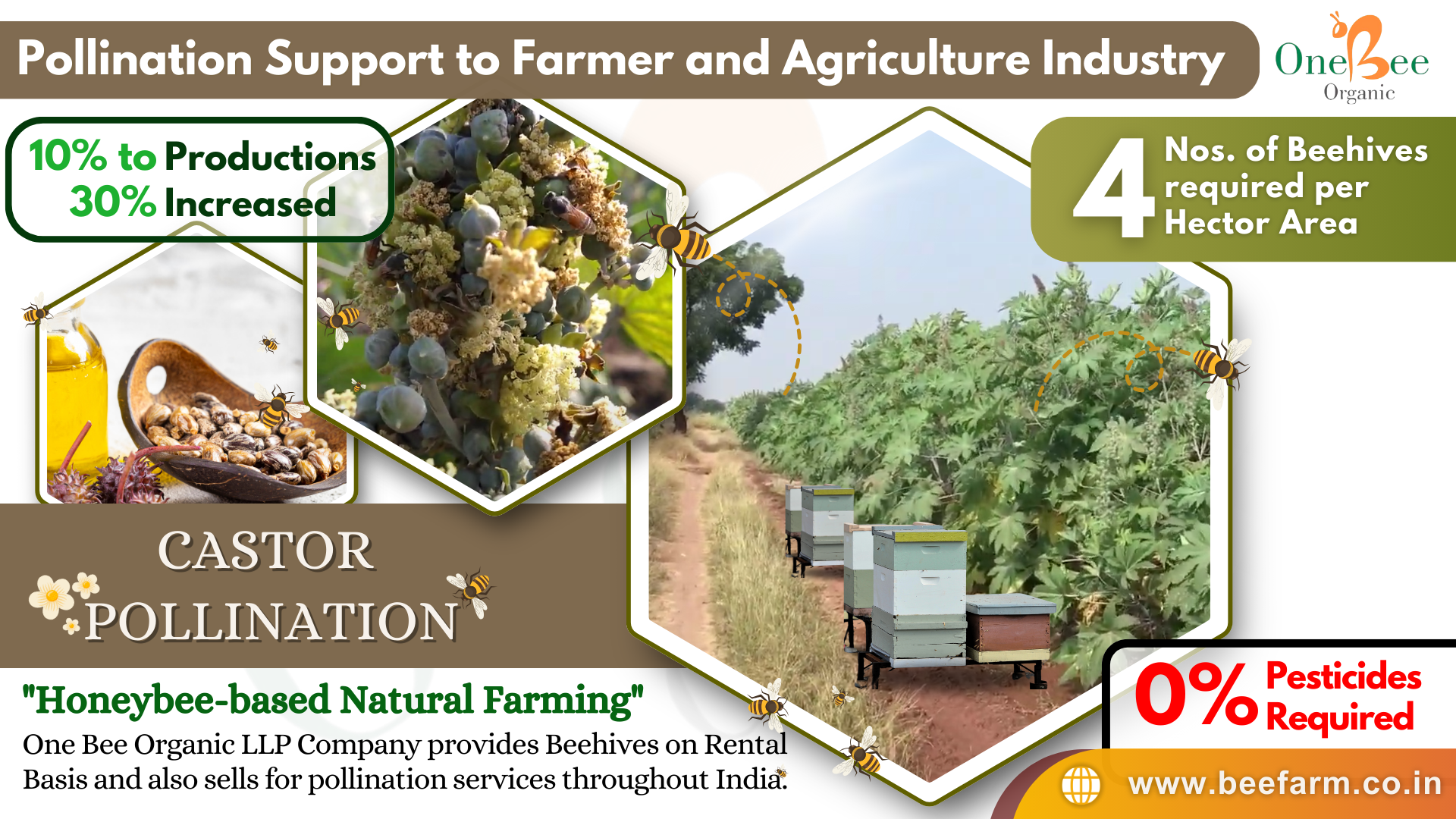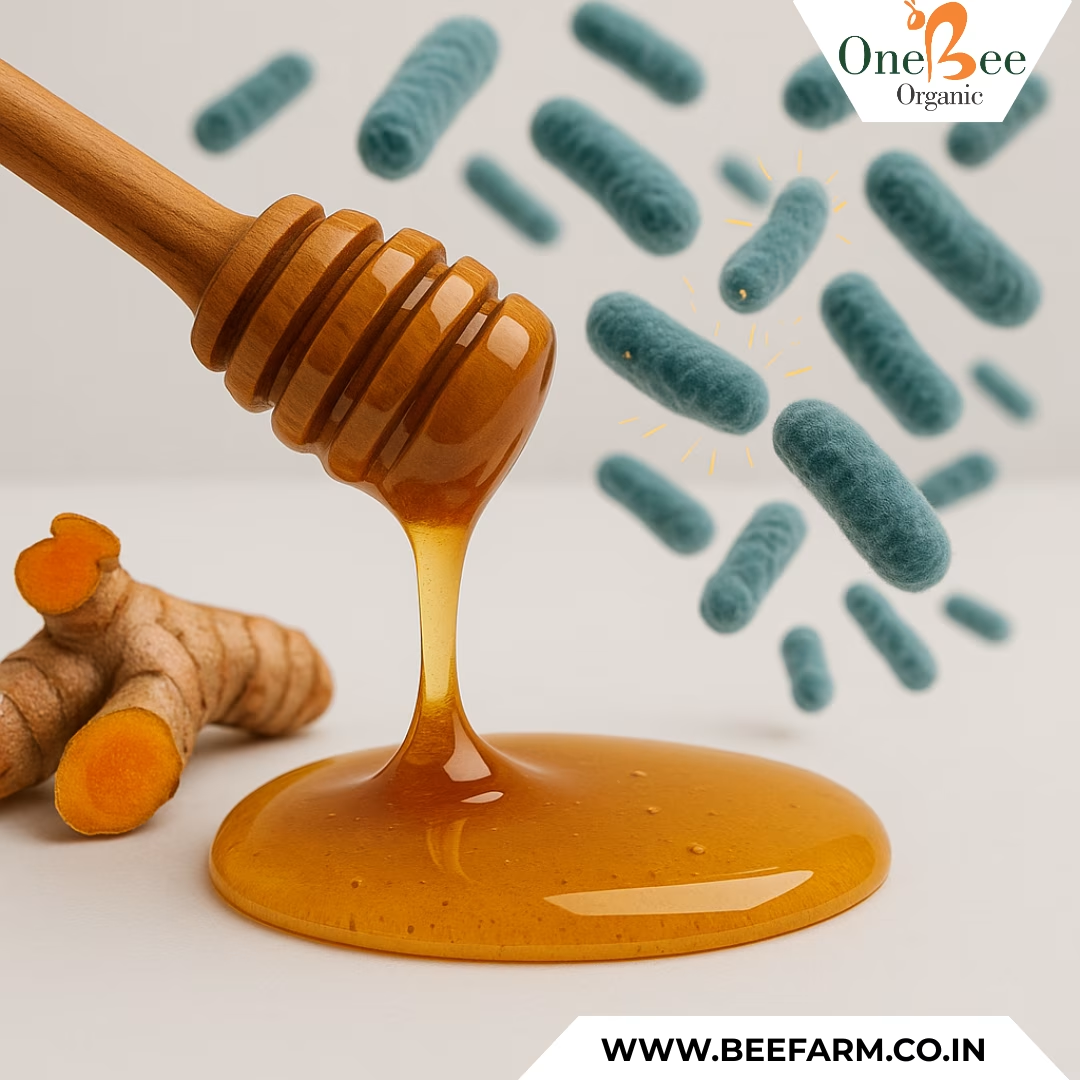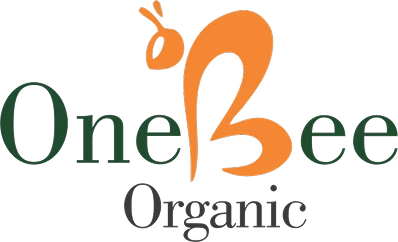Castor Pollination
Castor (Ricinus communis) is a crucial oilseed crop cultivated for its medicinal, industrial, and biofuel applications. The production of high-quality castor seeds is directly dependent on effective pollination, as the plant has separate male and female flowers requiring external agents for successful fertilization. Honeybee-assisted pollination significantly enhances seed yield, oil content, and overall crop productivity.
The Role of Honeybees in Pollination
While it is primarily wind-pollinated, research has shown that honeybee pollination improves pollen transfer efficiency, leading to a higher fruit set and better seed formation. Since castor plants produce an abundance of nectar-rich flowers, they naturally attract honeybees, which in turn promote cross-pollination and genetic diversity. This process results in uniform seed development, increased oil yield, and superior crop quality.
By integrating honeybee pollination into castor farming, growers can experience better productivity with reduced dependence on artificial pollination techniques. Honeybee visits facilitate faster and more uniform pollination, ensuring improved seed germination and higher oil extraction rates.
Key Benefits of Honeybee Pollination in Farming
- Higher Yield & Productivity – Increases castor seed production by 10% to 30%, leading to more profitable harvests.
- Enhanced Seed & Oil Quality – Promotes better seed formation, weight, and oil content, maximizing extraction potential.
- Eco-Friendly & Sustainable – Reduces the need for chemical-based pollination methods, supporting natural and organic farming.
- Cost-Effective & Efficient – Requires just 4 beehives per hectare, minimizing labor costs and improving farming efficiency.
- Encourages Biodiversity – Boosts the local pollinator population, contributing to overall ecosystem health.
Maximize Yield with Expert Pollination Services!
Unlock the full potential of your castor crops with our honeybee-assisted pollination services. Partner with us for higher productivity, superior seed quality, and increased profits.







Leave A Comment